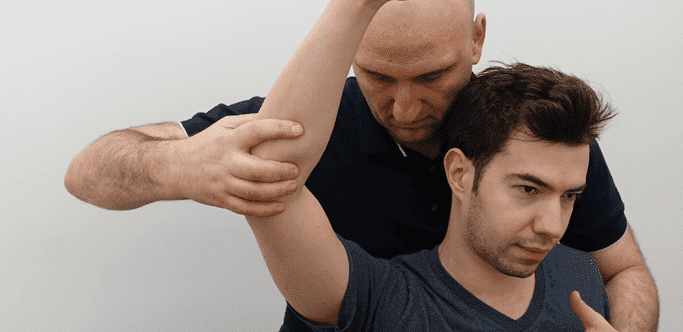November 6, 2020

Chronic shoulder pain from rotator cuff tendinosis is difficult to ignore, and it may keep you from performing even the most basic tasks. The longer it goes on, the more it interferes with your quality of life, making it difficult to carry out simple activities of daily living that you once took for granted. In an effort to find relief, you may go to a specialist who recommends corticosteroid shots to reduce inflammation and ease pain. However, the efficacy of steroid shots to relieve rotator cuff pain is highly contested.
In a recent meta-analysis published in “Clinical Orthopaedics and Related Research,” Mohamadi et al. reviewed the outcomes of 11 different studies about the efficacy of corticosteroid injections in relieving rotator cuff pain. All were randomized controlled trials that compared corticosteroids injections to placebo injections in 726 patients suffering from rotator cuff tendinosis.
The Researchers Concluded:
● Only one in five of the patients in the corticosteroid group reported minor transient pain relief within two months of injection.
● Pain relief did not improve with additional injections.
● Corticosteroid injections can cause harm to the tendon of the rotator cuff
● Injections are painful to patients and not particularly efficacious
● Seeking relief through steroid shots may cause patients to postpone treatment that may be more effective in reducing rotator cuff pain.
Even if shots do have a modicum of success in alleviating your pain, they may be masking a disorder that needs to be addressed before it becomes worse. Rotator cuff tendinosis may have multiple common causes:
● Aging may make you more vulnerable to rotator cuff injury, and reduce your capacity for tissue repair and healing.
● Repetitive overuse of rotator cuff muscles, caused by doing the same motion over and over again, for example, serving a tennis ball, can lead to tendinosis.
● Poor postural habits like slumping forward can narrow soft tissue space, causing abrasion and reducing blood flow to the muscles and tendons.
● Muscle fatigue from inadequate recovery can lead to poor movement mechanics and internal damage.
● Shoulder posterior capsule tightness may cause the ball of the shoulder to press upward into the socket, leading to abrasion of the rotator cuff muscles and tendons.
● Shoulder instability due to connective tissue laxity or deconditioned muscles may lead to impingement of the rotator cuff on the acromion bone.
The physical therapy team at NYDNRehab in NYC can guide you through a series of stretching and strengthening exercises that will eventually eliminate the underlying cause of your rotator cuff pain altogether, and restore full functionality to your shoulder girdle.
Physical Therapy Treatment may Include:
● Rest and cryotherapy to promote tissue healing
● Stretching the muscles of the shoulder capsule to restore flexibility
● Strengthening the rotator cuff muscles after they have had sufficient recovery
● Exercises to promote healthy postural habits
● Gradual return to sport or return to work strategies for activities requiring repetitive shoulder movement
Once physical therapy has been undertaken and your shoulder is restored to full functionality, it is up to you to take measures to maintain shoulder health. Reverting to physical inactivity, muscle overuse activities without adequate recovery and poor postural habits can undermine the benefits of physical therapy. To remain pain-free in the long run, a regular balanced exercise program with adequate rest and recovery between exercise sessions should be undertaken.
Dr. Lev Kalika is a world-recognized expert in musculoskeletal medicine. with 20+ years of clinical experience in diagnostic musculoskeletal ultrasonography, rehabilitative sports medicine and conservative orthopedics. In addition to operating his clinical practice in Manhattan, he regularly publishes peer-reviewed research on ultrasound-guided therapies and procedures. He serves as a peer reviewer for Springer Nature.
Dr. Kalika is an esteemed member of multiple professional organizations, including: